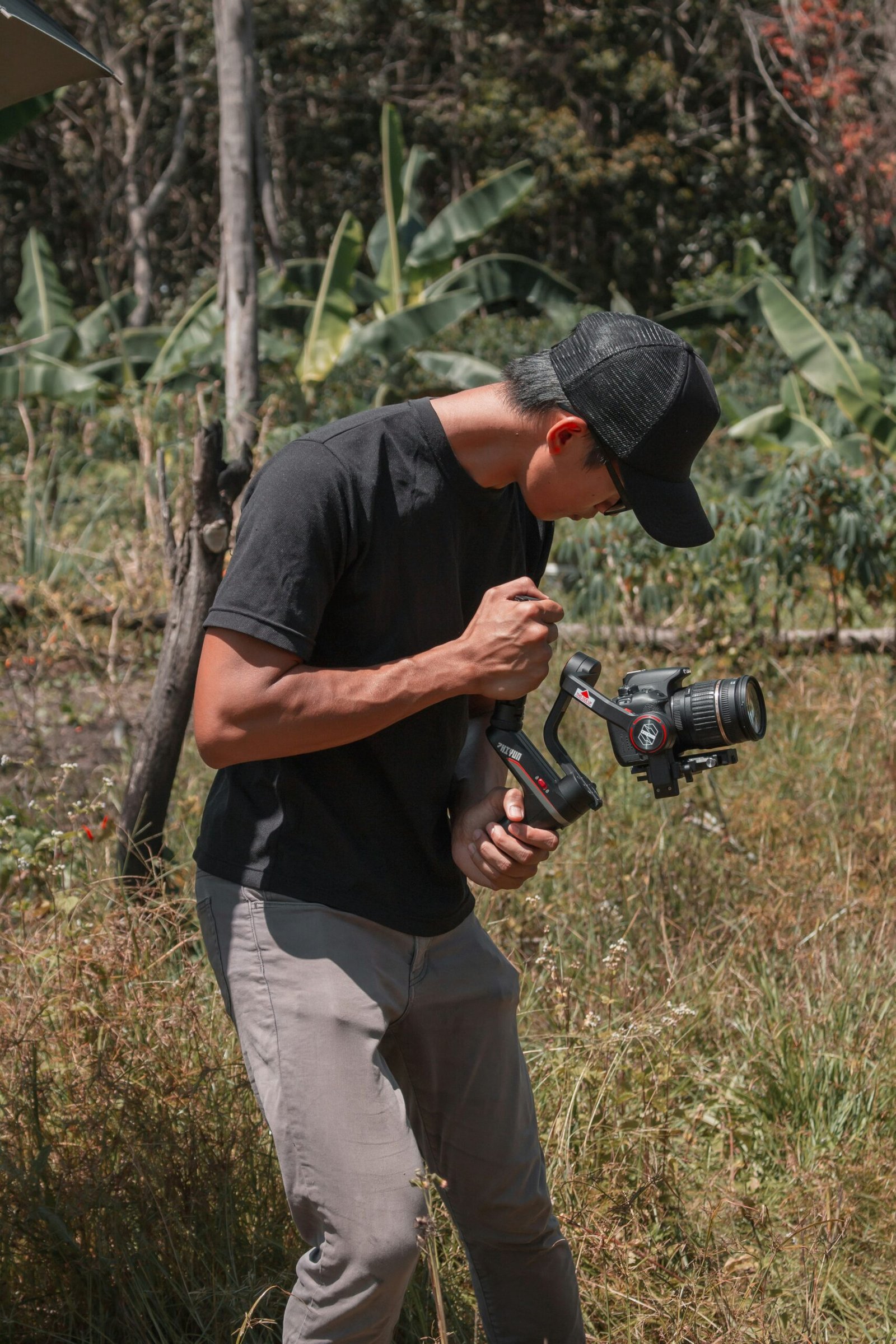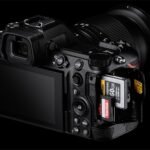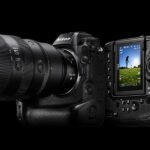Introduction to AI in Photography
The integration of artificial intelligence (AI) into photography marks a pivotal transformation in the field, reshaping how images are captured, edited, and shared. Historically, photography has undergone significant technological shifts, from the analog era to the digital revolution, each phase introducing new dimensions to the art and science of capturing moments. AI in photography continues this evolutionary trajectory, offering unprecedented precision, convenience, and creative possibilities.
AI technologies such as machine learning, neural networks, and computer vision are now deeply embedded in cameras and editing software. Leading this innovation, AI-driven cameras can recognize scenes, objects, and facial expressions, optimizing settings like exposure and focus in real time. These intelligent systems learn from immense datasets, enabling them to make swift, accurate decisions that surpass human capabilities in certain contexts. As a result, photographers can achieve consistently high-quality images with greater ease.
The significance of AI’s integration into photography extends beyond mere automation. It democratizes the art form, making sophisticated techniques accessible to amateurs while empowering professionals with advanced tools for creative expression. Machine learning algorithms can enhance image resolution, remove digital noise, and even restore old photographs, thus pushing the boundaries of what was previously possible. Furthermore, AI-powered editing tools streamline post-processing, enabling rapid adjustments and complex manipulations that align with the artist’s vision.
This seamless blend of AI and photography does not merely replace traditional methods; it enhances them. By augmenting human creativity with computational prowess, AI fosters novel avenues for exploration and expression, ensuring that the evolution of photography continues to captivate and innovate. Throughout this blog post, we will delve into various aspects of AI’s impact on photography, illustrating its transformative role and future potential.

AI-Based Enhancement and Retouching Tools
Artificial intelligence (AI) is transforming the realm of photo enhancement and retouching, offering unprecedented precision and efficiency in various functionalities. AI-powered tools are revolutionizing the way photographers and graphic designers approach image optimization. Notable advancements include color correction, noise reduction, facial recognition, and automated retouching, among other cutting-edge features.
Color correction is crucial for achieving the desired aesthetic effect in photographs. AI algorithms can analyze the color composition of an image, automatically adjusting parameters such as brightness, contrast, and saturation to enhance visual appeal. These adjustments ensure that the final image reflects true-to-life colors or the artistic vision of the creator.
Another significant functionality is noise reduction, which addresses the common issue of grainy or pixelated images, especially in low-light conditions. AI-driven tools can identify and eliminate noise without compromising on important details, resulting in cleaner and clearer photos. This level of precision was previously unattainable with traditional editing methods.
Facial recognition technology has also been a game-changer in the field of photography. AI algorithms can accurately detect and analyze facial features, enabling tools to perform targeted enhancements. This includes smoothing skin texture, whitening teeth, and adjusting skin tones, all while maintaining natural look. Such capabilities are particularly beneficial for portrait photography where the subject’s appearance is paramount.
Moreover, automated retouching has significantly streamlined the photo editing process. AI systems can quickly identify and remove imperfections like blemishes, wrinkles, and unsightly objects from the background. This not only saves time but also ensures a consistent level of quality across multiple images.
There are several popular software and applications that employ these advanced AI functionalities. Adobe Photoshop, with its AI-powered tools like Adobe Sensei, offers robust features for professional photo retouching. Similarly, Skylum’s Luminar AI leverages artificial intelligence to provide automated enhancements, making it user-friendly for both amateur and professional photographers. Another noteworthy mention is Topaz Labs, renowned for its AI-based noise reduction and sharpening technologies.
In summary, AI-based enhancement and retouching tools are redefining the standards of photo editing, making sophisticated alterations more accessible and efficient than ever before.
AI-Generated Imagery: Creation and Innovation
Artificial Intelligence (AI) has pioneered a transformative approach in the realm of imagery creation, introducing unique paradigms where machines and artistic vision converge. At the core of AI-generated imagery lie advanced algorithms like Generative Adversarial Networks (GANs), which facilitate the production of original images. GANs function through a process often described as a game between two neural networks: the generator and the discriminator. The generator creates images, while the discriminator evaluates them against real samples, iteratively improving the authenticity and novelty of generated content.
This synergy of AI technologies fosters new opportunities for creativity and artistic expression, particularly within the spectrum of photography. Traditional boundaries are expanding as photographers and artists harness these tools for innovative endeavors. Rather than merely automating repetitive tasks, AI-generated imagery enables the creation of compelling visuals that might be outside the scope of human imagination alone.
The impact of AI-generated art and photography is notable across various mediums. For instance, the work produced by AI models such as DeepArt or Artbreeder showcases stunning and original art forms, merging elements from existing visuals to render entirely novel creations. These platforms empower artists to experiment with styles and compositions, providing a virtually limitless palette for creativity. Another significant example is the use of GANs in generating hyper-realistic portraits that do not correspond to any real person, thus highlighting AI’s ability to craft entirely new identities.
As AI continues to integrate into the artistic process, it not only augments the capabilities of photographers but also challenges traditional perceptions of creativity. The coexistence of human ingenuity and machine learning cultivates a dynamic space where the essence of artistic expression is continually redefined. In this ecosystem, AI-generated imagery stands as a testament to the evolving confluence of technology and art, heralding a new era in the history of photography.
Authenticity in AI-Driven Photography
The advent of AI in photography has sparked significant debates regarding the authenticity of AI-enhanced and AI-generated images. While the technology offers unprecedented capabilities in refining and creating photographs, many professionals and critics question the extent to which AI alterations impact the validity and originality of the photographic work.
At the core of these debates is the concern that AI systems, though highly adept at improving image quality, might compromise the essence of the captured moment. The AI algorithms often enhance photographs by correcting colors, removing imperfections, and even generating elements that were not present in the original shot. This ability raises questions about the integrity of the image as a truthful representation of reality. Is it still an authentic photograph if significant portions of it have been digitally altered or generated by artificial intelligence?
Industry professionals have mixed opinions on this matter. Renowned photographer Jane Doe argues, “AI provides tools that enable photographers to realize their creative vision more accurately. However, it remains crucial to disclose the extent of AI involvement to maintain transparency with the audience.” In contrast, critic John Smith contends, “The pervasive use of AI can blur the line between genuine and engineered photographs, potentially eroding trust in the photographic medium.”
The concerns extend to the originality of AI-generated images. Traditional photography is celebrated for its spontaneity and unique moments captured in time. AI-generated photographs, however, can reproduce visually stunning pieces without any real-world counterparts. This potential for synthetic creation challenges the conventional understanding of what constitutes an original photograph.
Despite these debates, there is a consensus that AI will continue to play a transformative role in the field of photography. The key lies in striking a balance—leveraging AI’s powerful capabilities while preserving the authenticity and originality that underpin the art of photography. Moving forward, transparency about AI use and a commitment to ethical standards will be pivotal in navigating these challenges.
Creativity and the Role of Photographers in an AI Era
The advent of artificial intelligence (AI) in photography has ignited a profound evolution within the field, prompting significant shifts in the role of photographers. As AI technology becomes increasingly sophisticated, it provides photographers with innovative tools that can both augment and sometimes overshadow traditional techniques. This duality raises crucial questions about whether AI dilutes human creativity or enhances it by expanding the horizons of what is artistically possible.
On one hand, AI-powered applications such as image recognition, automated editing, and advanced compositional algorithms offer photographers unprecedented opportunities to refine their craft. These tools can streamline the editing process, suggest optimal compositions, and even mimic various artistic styles, thereby freeing photographers to focus on the conceptual and creative aspects of their work. For instance, AI-driven software like Adobe’s Sensei and Skylum Luminar AI enable the automation of complex editing tasks, thus significantly reducing the time spent on post-processing.
Many contemporary photographers embrace these advancements, arguing that AI augments their creative abilities rather than supplants them. They perceive AI as an extension of their toolkit, one that can elevate their artistic expression to new heights. The integration of AI allows photographers to explore innovative techniques and push the boundaries of visual storytelling. They regard AI as a collaborative partner—enabling enhanced creativity through smarter, more efficient processes.
Conversely, there is a segment of the photographic community that harbors reservations concerning AI’s impact on their craft. These photographers fear that the growing dependence on AI-manipulated imagery may compromise the authenticity and individuality of their work. There is a concern that the proliferation of AI-generated content might homogenize artistic expressions, making it challenging for unique styles to stand out.
Ultimately, the debate on AI and creativity in photography underscores a nuanced reality: AI’s role is not to replace human artistry but to reshape it. Photographers who adapt to and incorporate AI into their workflows can cultivate a symbiotic relationship with technology, drawing from its capabilities to transcend conventional limitations while maintaining the intrinsic value of human creativity. This evolving dynamic ensures that while AI revolutionizes the field, it simultaneously reaffirms the indispensable role of visionary photographers.
Ethical Considerations and Privacy Issues
The integration of artificial intelligence (AI) into the field of photography brings forth both remarkable advancements and significant ethical dilemmas. Central to these concerns are issues of privacy, data usage, and consent. AI-driven tools have the ability to analyze vast amounts of photographic data, often leading to the inadvertent infringement of personal privacy. For instance, AI-powered facial recognition technology, while useful for organizing and tagging photos, can also be used for unauthorized surveillance or data collection, raising serious ethical and privacy questions.
One prominent example involves the misuse of AI in photo manipulation, where deepfake technologies can create hyper-realistic photos and videos that depict individuals in compromising or fabricated situations without their consent. This not only invades personal privacy but also poses broader societal risks in terms of misinformation and the erosion of trust. The Cambridge Analytica scandal serves as a cautionary tale about the ramifications of misused data, albeit not directly linked to photography, it underscores the dangers of unregulated data usage in any realm, highlighting the importance of safeguarding against similar abuses in AI-assisted photography.
To address these ethical quandaries, it is imperative to establish robust guidelines and protocols. Photographers and developers must ensure transparency in how AI tools function and where the data comes from. Consent should be explicitly obtained from individuals whose images are subject to AI analysis or manipulation. Legal frameworks like the General Data Protection Regulation (GDPR) in Europe offer a foundational model, mandating strict data protection and privacy rights, which can be adapted to govern AI applications in photography.
Ethical AI usage also involves continuous oversight and accountability. Industry bodies and policymakers must work collaboratively to create standards that protect privacy while allowing innovation. By embracing these ethical considerations, the photography industry can harness AI’s potential responsibly, ensuring that advancements enhance the field without compromising the rights and privacy of individuals.
Future Trends in AI and Photography
The realm of photography is poised for remarkable advancements as AI technology accelerates its transformation. One of the anticipated trends is the development of increasingly sophisticated image enhancement tools. These AI-driven tools will not merely automate simple adjustments; they will offer capabilities akin to professional retouching, allowing artists to perfect their work in real time. These advancements are predicted to result in higher-resolution images with unparalleled clarity and color accuracy.
Additionally, the evolution of AI in photography is expected to lead to more intuitive and powerful cameras. Future cameras may leverage AI to predict and suggest the optimal settings for various environments and subjects. Real-time scene recognition, dynamic focusing, and predictive shutter release could become staple features, enabling photographers to capture the perfect shot effortlessly. In the commercial sector, this could significantly enhance product photography, fashion shoots, and even live event coverage.
Another transformative trend lies in augmented creativity. AI algorithms are being developed that can generate artistic styles, mimicking renowned artists or creating entirely new aesthetics. Photographers will be able to experiment with visual storytelling in ways previously unimaginable, blending reality with creative interpretations. This fusion of art and technology will expand the boundaries of visual expression and open new avenues for artistic exploration.
The future will also witness the proliferation of AI-enhanced editing software. These tools will likely employ advanced machine learning techStarting a Photography Business30 Best Places to Photograph in San Antonio, Texas to automate complex editing tasks, from background replacement to comprehensive photo manipulations. The anticipated reduction in time and effort required for post-processing will empower photographers to focus more on the creative aspects of their work.
On the horizon, advancements in AI-driven accessibility features are expected to democratize photography further. Enhanced user-friendly interfaces and voice-guided instructions could make professional-grade photography achievable for individuals with diverse skills and abilities. Overall, the synergy between AI and photography will continue to reshape the field, fostering innovation, creativity, and accessibility in both artistic and commercial domains.
Conclusion: Embracing the AI-Photographic Synergy
Throughout this exploration of AI and photography, it is evident that the integration of artificial intelligence into the photographic domain has ushered in a new era of possibilities. By automating repetitive tasks, enhancing image quality, and offering innovative tools like AI-driven editing software, AI is significantly transforming the way photographers capture and process images. These advancements have allowed photographers to focus more on their creative visions while leaving the technical intricacies in the capable hands of machine learning algorithms.
However, this technological revolution does not come without its set of challenges and controversies. The debate over authenticity arises when AI-generated images blur the lines between reality and artificial creation, prompting concerns regarding the essence and integrity of photography as an art form. Moreover, there’s a growing discourse about the impact of AI on creativity. While some argue that AI stifles human artistry, others believe it provides a new avenue for creative expression by offering tools that expand the artistic capabilities of photographers.
Embracing the synergy between AI and photography means acknowledging both the opportunities and the challenges it presents. For photographers and enthusiasts, staying informed and adaptable is crucial. Engaging with AI-based tools can enhance their work processes, allowing for more efficient workflows and the creation of captivating visual stories. By experimenting with AI, photographers can push the boundaries of traditional image-making, explore new creative possibilities, and ultimately redefine what is possible in the art of photography.
The future of photography appears bright with the integration of AI, promising a harmonious blend of technological advancement and creative ingenuity. As we look forward, the photographic community needs to harness the power of AI while continuing to value the unique human touch that makes each photograph truly remarkable.
For more in-depth information, you can explore these resources:
- How AI is Changing Photography – Adobe’s overview of how AI tools are being integrated into modern photography.
- The Impact of AI on Photography – An article from Fstoppers discussing the implications of AI on the industry.
- AI in Photography: Is It the Future? – Photography Blog’s take on how AI might shape the future of photography.




